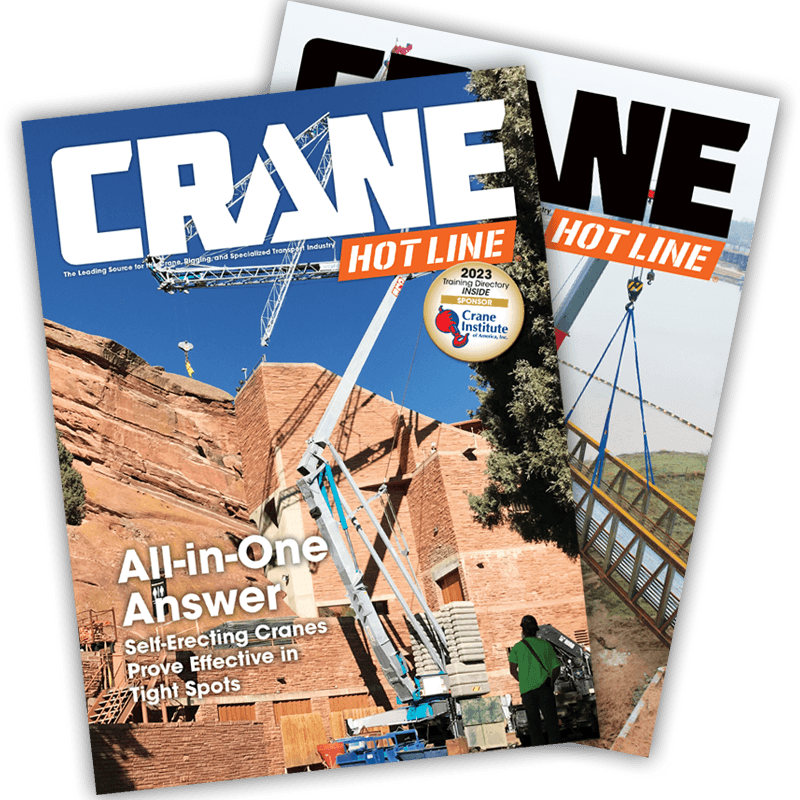Why Telescopic Cranes Deliver More Value on Today’s Jobsites
(Sponsored Content) — Telescopic Cranes: Speed, Safety and Smarter Lifts
Heavy lifting projects are never simple. Deadlines are tight, schedules shift and the margin for error is slim. Add the complexity of oversized loads and congested jobsites, and every delay carries both financial and safety consequences. Project leaders know that efficiency on a lift is not just about speed — it’s about precision and planning under pressure.
Telescopic cranes have become an essential tool for meeting these challenges. With advanced hydraulic boom systems and unmatched mobility, they combine lifting power with flexibility. Whether it’s an urban build, an industrial plant upgrade or a remote infrastructure project, telescopic cranes bring contractors a faster and safer way to keep work moving.
What Makes Telescopic Cranes Different
The defining feature of telescopic cranes is their hydraulic boom. Operators can extend and retract multiple sections smoothly, without the need for additional assembly. This allows a crane to reach where it needs to in minutes rather than hours, minimizing downtime before the first lift even begins.
Compared to lattice boom cranes, which require additional setup, transport permits and more ground space, telescopic cranes can be mobilized quickly and adapted to a wider variety of environments. Their design reduces the need for auxiliary equipment and long assembly crews.
Their compact footprint is another advantage. Telescopic cranes can operate on tighter jobsites, including downtown projects or industrial facilities with limited access. Despite their smaller setup space, they provide the capacity needed for heavy lifts, bridging the gap between speed and strength.
Efficiency Gains on the Jobsite
For contractors, efficiency is measured in hours saved and costs reduced; telescopic cranes excel in both. Their rapid setup and teardown mean crews spend less time preparing and more time working. In some cases, setup time has been shown to drop by as much as 40% compared to lattice boom cranes.
This speed also reduces the amount of heavy labor required. Fewer hours spent building and dismantling a crane translate directly into lower labor costs and less jobsite disruption.
Maneuverability adds another layer of efficiency. Telescopic cranes can navigate congested areas, avoiding delays that come with moving other equipment or shutting down surrounding operations. For project managers, this means fewer bottlenecks and more consistent progress, even on jobsites with tight access or shifting schedules.
Safety and Standards Compliance
Every heavy lift comes with risk, which is why safety remains the top priority. Telescopic cranes provide stability and precise control through their hydraulic systems, allowing operators to handle heavy or awkward loads with greater accuracy. Built-in safety features, such as load monitoring and automatic boom control, add extra layers of protection on complex jobsites.
Of course, equipment is only part of the equation. Telescopic cranes deliver the best results in the hands of NCCCO-certified operators who follow OSHA and ANSI standards. For project managers, this means reduced accident risk, smoother safety inspections and compliance with regulatory requirements, all of which translate into fewer delays and stronger confidence in every lift.
Engineering Support for Smarter Lifts
Efficiency is not only about equipment, but also about the planning that guides each operation. Modern telescopic crane projects rely on CAD modeling, 3D simulations and engineered lift drawings to predict outcomes before a load ever leaves the ground. This approach allows teams to anticipate challenges, fine-tune crane placement and eliminate wasted time during execution.
At Hill Crane, engineered drawings and detailed rigging designs are a standard part of every lift. By integrating engineering with field operations, the team ensures cranes are used to their maximum potential, improving safety, reducing downtime and delivering reliable performance on even the most complex projects.
Case Study: Efficiency in Action
A recent industrial project required the replacement of large HVAC units at a facility with limited access and a strict shutdown window. Hill Crane deployed a 360-ton telescopic crane to complete the work. The crane’s hydraulic boom design eliminated the need for time-consuming lattice assembly, cutting setup time by nearly 40% compared to conventional alternatives.
With a smaller crew and fewer shifts required, the team reduced labor hours and minimized disruption to the site. Tight clearances around the building made maneuverability a challenge, but the compact footprint of the telescopic crane allowed operators to position equipment precisely without additional road closures.
The result was a safe, on-time lift completed within the allotted shutdown period. This project demonstrated how telescopic cranes not only promise efficiency but consistently deliver measurable value when deadlines are non-negotiable.
Long-Term ROI and Value
For contractors, every hour on the job carries a cost. By reducing delays, telescopic cranes keep crews productive and limit the wasted labor hours that drive budgets off course. Their hydraulic precision also minimizes the chance of rework, ensuring lifts are completed right the first time.
Lower risk exposure is another long-term advantage. With certified operators, advanced controls and compliance with industry standards, projects move forward with fewer disruptions and stronger reliability.
Takeaway for Contractors
Telescopic cranes deliver what today’s projects demand: speed, safety, adaptability and measurable return on investment. They cut setup times, keep crews focused and help project managers navigate tight schedules without compromising safety.
Providers like Hill Crane are delivering telescopic crane solutions with engineered planning and certified operators to keep projects on schedule. To learn more about engineered crane solutions, visit HillCrane.com.



